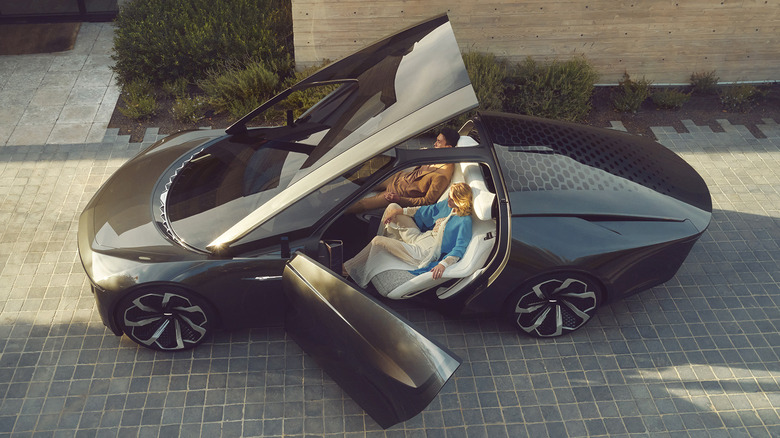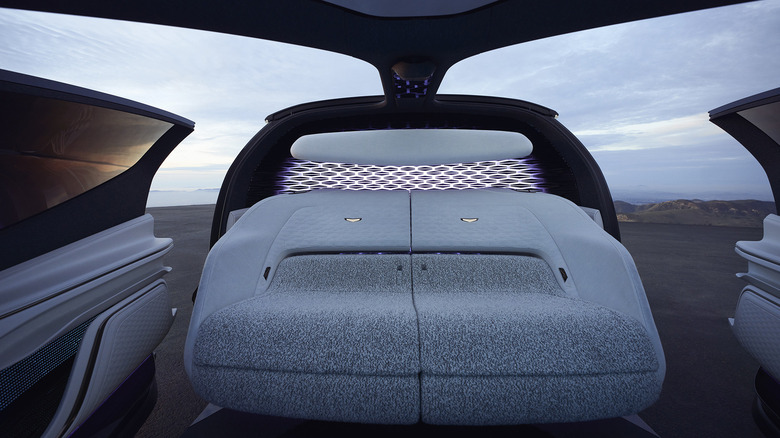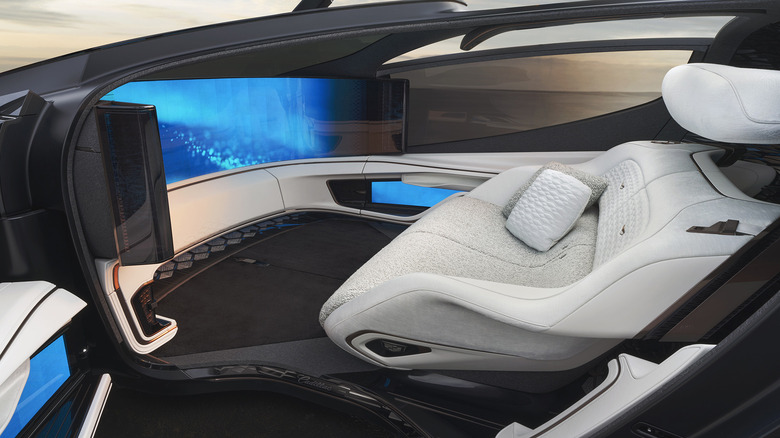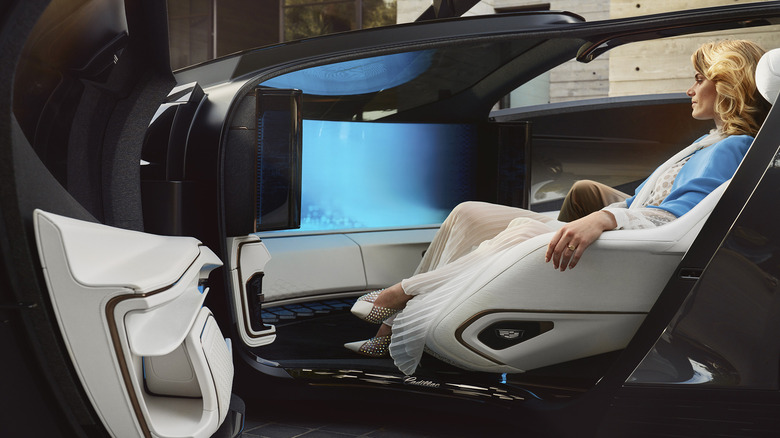The Big Concern TikTok Has About The Cadillac InnerSpace
Cadillac has showcased a new concept car called the InnerSpace and it has TikTokers reeling. The new car does away with things like gas and brake pedals and completely removes the steering wheel. Instead of these common elements, the model features an insane amount of buttons and interactive surfaces, as well as a massive, curved screen where the windshield would normally be.
The InnerSpace joins Cadillac's other concept cars: the PersonalSpace and the SocialSpace. Where the PersonalSpace is meant for one person, and the SocialSpace is meant for a group or family, the InnerSpace is designed with two people in mind. The two seats can come together to form a loveseat, making it easy to cuddle while you watch videos or play games on the curved screen that covers the front of the vehicle.
The concept is also slotted with tons of themes for augmented reality, wellness recovery, and entertainment in general. InnerSpace itself looks like something right out of a sci-fi movie, and while many users on TikTok have taken to the idea of a car concept like this, others are less inclined to accept it as-is. What's the big concern? Some viewers think the vehicle looks unsafe.
TikTok is worried about reliability on the road
"I really don't see this being on the road anytime soon," one TikTok comment reads on a series of videos shared by TikToker pushingpistons. Others seem to focus more on the fact that the concept car looks like it'll be far too expensive for most people to buy. Even still, others lean more into the safety concerns that come with fully autonomous vehicles, especially those that actively draw your attention away from the road.
"Would never work on normal roads. Some roads are just so bad it would glitch and you'd crash," user Kendal Chun writes. The comment, which feels like a callback to some of the issues we've seen with Apple Maps and even Google Maps in the past, was echoed by others.
Another mentioned that maps are never perfect, so not being able to take control could prove a safety hazard. This could be especially true in areas where our virtual maps aren't updated often, or when new roads are installed. Additionally, cities are always making repairs and changes to roads, especially freeways and highways, which would mean a constant influx of updates would be needed to keep the vehicle completely safe and reliably on the roads that it travels. That isn't impossible, but it is another cog in an already complicated machine.
TikTok is worried that people could be trapped inside
Other TikTok users touched on the fact that the car doesn't appear to have any door handles. As such, it would seemingly be impossible to open the door from the outside if the car crashed or caught on fire, potentially leaving the people trapped inside. It's a grim comment, but one that automobile makers will definitely have to take into account as they create cars like this for the future.
But, the concerns don't stop there. Other users brought up the way the doors themselves open. The roof of the car lifts up, while the doors open outward. The big concern with this setup, though, is that ice, rain, or any other type of inclement weather could get into the car when the doors are opening. Some even wondered how the car would fair in states where the snow covers the tops of vehicles with several layers of white powder.
Mistrust in the AI behind the wheel
Perhaps one of the most cited problems with the Cadillac InnerSpace, though, is the full trust that you'd have to put into an AI to drive you around. With so many reports of accidents involving cars using self-driving technology, many feel they haven't been given a very good reason just yet to fully trust the AI that would need to drive these vehicles. As such, a lot of TikTok users are worried about giving up control to a system that relies on data to get them around.
Of course, this is a concept car, so the answers to all of these questions aren't available just yet. However, it is interesting to see so many TikTok users worried about these particular problems and not just losing themselves in the flash and spectacle of the vehicle itself. It also shows that if automobile makers want to capture the wider car-using world, they're going to need to come up with solutions for these problems, too.



